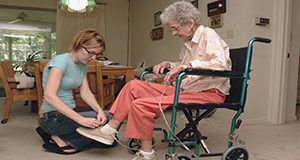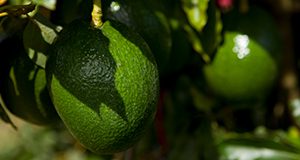Lave men enpòtan pou redwi transfè jèm mikwòb ki soti nan matyè fekal oswa poupou pou ale nan bouch, ki ka lakoz maladi. Timoun piti ak granmoun aje yo gen mwens kapasite pou yo konbat jèm mikwòb pase lòt kategori moun. Kòm moun kap pran swen moun ou ka ede diminye risk maladi ki ka pwopaje nan anviwònman ki gen anpil moun lè w swiv bon jan metòd pou lave men w. This is the Haitian Creole version of FCS8782, Proper Hand Washing for Caregivers. Written by Amy Simonne, translated and reviewed by Emmanuel Jean Claude Duvalsaint and Nicole Monval, and published by the UF/IFAS Department of Family, Youth and Community Sciences, March 2020.
https://edis.ifas.ufl.edu/fy1490
Tag: Amy Simonne
Pi bon fason pou timoun piti (ki gen laj pou ale lekol) lave men yo
Jèm yo ka kache anba zong ki long ak nan men ki sal. Kenbe zong ou kout epi lave men w souvan, se aksyon ki pi enpòtan ou ka poze pou anpeche jèm mikwòb fè w tonbe malad. Jèm ki bay maladi tankou larim, grip, dyare, ak vomisman ka vinn nan men w lè w manyen objè ki nan alantou w. Moun, animal domestik, manje kri, jwèt, tè, ak tout objè nou itilize plizyè fwa pa jou, yo tout ka gen jèm mikwòb sou yo. Lè w lave men w byen li ede retire jèm mikwòb nan men w. This is the Haitian Creole version of FCS8783, Proper Hand Washing for School Children. Written by Amy Simonne, translated and reviewed by Emmanuel Jean Claude Duvalsaint and Nicole Monval, and published by the UF/IFAS Department of Family, Youth and Community Sciences, March 2020.
https://edis.ifas.ufl.edu/fy1491
Lactose Intolerance: What Consumers Need to Know
Lactose intolerance can be an uncomfortable, inconvenient condition with a variety of causes and treatments. This 3-page document will provide guidance for consumers so that they may find the right information to help them manage this condition. Written by Matt Krug and Amy Simonne and published by the UF/IFAS Department of Food Science and Human Nutrition, November 2018.
http://edis.ifas.ufl.edu/fs316
South Florida Tropicals: Avocado
This 4-page fact sheet is a major revision that discusses the background, availability, selection, ripening, storage, uses, yield, nutritive value, and basic, safe preparation of the avocado. The document also contains several avocado-based recipes. Written by Linda B. Bobroff and Amy Simonne, and published by the UF/IFAS Department of Family, Youth and Community Sciences, revised January 2018.
http://edis.ifas.ufl.edu/he606
South Florida Tropicals: Carambola
 The carambola or star fruit is native to Southeast Asia. It was introduced to Florida about 100 years ago. This 4-page fact sheet is a major revision that discusses availability, selection, uses, nutritive value, and food safety during preparation of carambola. This document also includes several recipes. Written by Amy Simonne and Linda B. Bobroff, and published by the UF Department of Family, Youth and Community Sciences, revised April 2017.
The carambola or star fruit is native to Southeast Asia. It was introduced to Florida about 100 years ago. This 4-page fact sheet is a major revision that discusses availability, selection, uses, nutritive value, and food safety during preparation of carambola. This document also includes several recipes. Written by Amy Simonne and Linda B. Bobroff, and published by the UF Department of Family, Youth and Community Sciences, revised April 2017.
http://edis.ifas.ufl.edu/he613
Food Safety at Tailgating
 While tailgating can be a great fun for family and friends, you need to make plans and take on-site precautions to keep your food safe during these events. Since refrigerators and running water are not always available for the events, you should familiarize yourself with the safe food handling practices for these outdoor events and plan ahead so you will be prepared with enough coolers/ice and all the tools you need to keep and cook your food safely. This 3-page fact sheet provides information on safe food practices for tailgating and other outdoor sporting events. Written by Soohyoun Ahn, Amarat H. Simonne, and Keith R. Schneider, and published by the UF Department of Food Science and Human Nutrition, October 2014.
While tailgating can be a great fun for family and friends, you need to make plans and take on-site precautions to keep your food safe during these events. Since refrigerators and running water are not always available for the events, you should familiarize yourself with the safe food handling practices for these outdoor events and plan ahead so you will be prepared with enough coolers/ice and all the tools you need to keep and cook your food safely. This 3-page fact sheet provides information on safe food practices for tailgating and other outdoor sporting events. Written by Soohyoun Ahn, Amarat H. Simonne, and Keith R. Schneider, and published by the UF Department of Food Science and Human Nutrition, October 2014.
http://edis.ifas.ufl.edu/fs256
How to Start a Food Business: Introduction
 While running your own food business can be a rewarding and exciting experience, it can be overwhelming and stressful. It is important to understand the pros and cons of running your own food business and decide if you are ready to pursue a food business venture. This 3-page fact sheet was written by Soohyoun Ahn, Renee Goodrich-Schneider, and Amarat H. Simonne, and published by the UF Department of Food Science and Human Nutrition, September 2014.
While running your own food business can be a rewarding and exciting experience, it can be overwhelming and stressful. It is important to understand the pros and cons of running your own food business and decide if you are ready to pursue a food business venture. This 3-page fact sheet was written by Soohyoun Ahn, Renee Goodrich-Schneider, and Amarat H. Simonne, and published by the UF Department of Food Science and Human Nutrition, September 2014.
http://edis.ifas.ufl.edu/fs254
Clostridium difficile: an Important Opportunistic Pathogen in Healthcare-Associated Infections
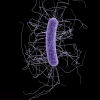 Opportunistic pathogens are significant health threats to vulnerable people with weakened immune systems, such as people with HIV/AIDS or those on immune-suppressing therapies. One opportunistic pathogen, Clostridium difficile, has been getting more attention in recent years because of its association with antibiotic use and high death rate in the elderly. This factsheet will provide an overview of Clostridium difficile infection (CDI) with a focus on healthcare-associated infections. This 5-page fact sheet was written by Soohyoun Ahn and Amarat H. Simonne, and published by the UF Department of Food Science and Human Nutrition, September 2014.
Opportunistic pathogens are significant health threats to vulnerable people with weakened immune systems, such as people with HIV/AIDS or those on immune-suppressing therapies. One opportunistic pathogen, Clostridium difficile, has been getting more attention in recent years because of its association with antibiotic use and high death rate in the elderly. This factsheet will provide an overview of Clostridium difficile infection (CDI) with a focus on healthcare-associated infections. This 5-page fact sheet was written by Soohyoun Ahn and Amarat H. Simonne, and published by the UF Department of Food Science and Human Nutrition, September 2014.
http://edis.ifas.ufl.edu/fs253
Facts about Quinoa
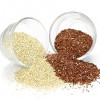 The U.S. Department of Agriculture’s MyPlate nutrition guide recommends that Americans consume half of their grains from whole grain foods. Whole wheat bread and oatmeal are whole grain foods that are familiar to most Americans, but lots of other whole grain foods are also available. An example of an unfamiliar whole grain food is quinoa (pronounced keen-wa). Quinoa is a nutritious seed that is simple to prepare. It can be served as a hot cereal or side dish, as a cold salad similar to pasta salad, or it can be used in recipes in place of rice or other grains. It also has the advantage of being gluten free, which is a must for people diagnosed with celiac disease. Follow the link to learn more about quinoa and what it has to offer. This 3-page fact sheet was written by Alexandra Dati, Gail Kauwell, and Amy Simonne, and published by the UF Department of Family Youth and Community Sciences, May 2014.
The U.S. Department of Agriculture’s MyPlate nutrition guide recommends that Americans consume half of their grains from whole grain foods. Whole wheat bread and oatmeal are whole grain foods that are familiar to most Americans, but lots of other whole grain foods are also available. An example of an unfamiliar whole grain food is quinoa (pronounced keen-wa). Quinoa is a nutritious seed that is simple to prepare. It can be served as a hot cereal or side dish, as a cold salad similar to pasta salad, or it can be used in recipes in place of rice or other grains. It also has the advantage of being gluten free, which is a must for people diagnosed with celiac disease. Follow the link to learn more about quinoa and what it has to offer. This 3-page fact sheet was written by Alexandra Dati, Gail Kauwell, and Amy Simonne, and published by the UF Department of Family Youth and Community Sciences, May 2014.
http://edis.ifas.ufl.edu/fy1408
Being Smart about Gluten and Gluten-free Issues, Part 2: What Retailers and Consumers Need to Know about Gluten and Gluten-free Product Labeling
 In 2011, gluten was recognized as having a specific link to celiac disease, and some consumers hoping to minimize the symptoms of celiac disease have opted to modify their diets. This is the second of a three-part series of publications called “Being Smart about Gluten and Gluten-Free Issues.” The purpose of this publication is to supply retailers and consumers with easy-to-understand information about labeling as related to gluten-free products. This 3-page fact sheet was written by Abigail Dicks, Amy Harder, and Amy Simonne, and published by the UF Department of Agricultural Education and Communication, September 2014.
In 2011, gluten was recognized as having a specific link to celiac disease, and some consumers hoping to minimize the symptoms of celiac disease have opted to modify their diets. This is the second of a three-part series of publications called “Being Smart about Gluten and Gluten-Free Issues.” The purpose of this publication is to supply retailers and consumers with easy-to-understand information about labeling as related to gluten-free products. This 3-page fact sheet was written by Abigail Dicks, Amy Harder, and Amy Simonne, and published by the UF Department of Agricultural Education and Communication, September 2014.
http://edis.ifas.ufl.edu/wc153
Safe Dishwashing Without an Automatic Dishwasher for Home, Community Events, and Outdoor Activities
 Most of us are accustomed to the ease and convenience of washing our dishes in an automatic dishwasher. At times, however, no dishwasher is available. This 4-page fact sheet teaches ways to safely wash or clean your dishes by hand, which may be necessary when your dishwasher is broken, you are outdoors, or you are working in a facility without a dishwasher. Written by Morgan Denhard, Amy Simonne, and Ricki McWilliams, and published by the UF Department of Family Youth and Community Sciences, December 2014.
Most of us are accustomed to the ease and convenience of washing our dishes in an automatic dishwasher. At times, however, no dishwasher is available. This 4-page fact sheet teaches ways to safely wash or clean your dishes by hand, which may be necessary when your dishwasher is broken, you are outdoors, or you are working in a facility without a dishwasher. Written by Morgan Denhard, Amy Simonne, and Ricki McWilliams, and published by the UF Department of Family Youth and Community Sciences, December 2014.
http://edis.ifas.ufl.edu/fy1403
Home Gardening Food Safety: Washing the Fruits (and Vegetables) of Your Labor Properly
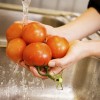 Having a home garden has become popular recently. It is a great way to enjoy fresh fruits and vegetables—foods that are an important part of a healthy diet. However, just because you have your own garden and control how it is treated does not make the fruits and vegetables you grow safer than those you buy in the store. To reduce the chance of getting sick from foodborne illnesses, you must wash the fruits and vegetables you grow before eating them raw or cooked. This publication helps you learn the proper way to clean your fruits and vegetables so you can enjoy them safely. This 4-page fact sheet was written by Eshani Persaud, Amy Simonne, and Karla P. Shelnutt, and published by the UF Department of Family Youth and Community Sciences, November 2013.
Having a home garden has become popular recently. It is a great way to enjoy fresh fruits and vegetables—foods that are an important part of a healthy diet. However, just because you have your own garden and control how it is treated does not make the fruits and vegetables you grow safer than those you buy in the store. To reduce the chance of getting sick from foodborne illnesses, you must wash the fruits and vegetables you grow before eating them raw or cooked. This publication helps you learn the proper way to clean your fruits and vegetables so you can enjoy them safely. This 4-page fact sheet was written by Eshani Persaud, Amy Simonne, and Karla P. Shelnutt, and published by the UF Department of Family Youth and Community Sciences, November 2013.
http://edis.ifas.ufl.edu/fy1401
Eating Defensively: The Nutrition and Food Safety Benefits of Cooked Produce
 Current nutrition trends such as the “raw food diet” may lead consumers to believe that raw leafy vegetables are more nutritious than cooked vegetables, despite research showing that cooked vegetables make important nutritional contributions. This publication describes the nutrient retention and quality of cooked vegetables, explains why cooking vegetables is appropriate for consumers with food safety concerns, and provides tips for preparing cooked vegetables. This 4-page fact sheet was written by Morgan Dehnard, Amy Simonne, and Gail P. A. Kauwell, and published by the UF Department of Family Youth and Community Sciences, October 2013.
Current nutrition trends such as the “raw food diet” may lead consumers to believe that raw leafy vegetables are more nutritious than cooked vegetables, despite research showing that cooked vegetables make important nutritional contributions. This publication describes the nutrient retention and quality of cooked vegetables, explains why cooking vegetables is appropriate for consumers with food safety concerns, and provides tips for preparing cooked vegetables. This 4-page fact sheet was written by Morgan Dehnard, Amy Simonne, and Gail P. A. Kauwell, and published by the UF Department of Family Youth and Community Sciences, October 2013.
http://edis.ifas.ufl.edu/fy1395
Melons: Safe Handling Practices for Consumers
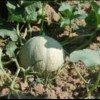 Since most of us buy melons at the store or farmers market, it is easy to forget that most melons are grown on the ground. Watermelons, cantaloupe, and honeydew melon are the most popular varieties of melons in the United States. Because they are exposed to pests and microorganisms from dirt, it is very important to apply the best food safety practices before enjoying them.This 3-page fact sheet was written by Amy Simonne, and published by the UF Department of Family Youth and Community Sciences, June 2013.
Since most of us buy melons at the store or farmers market, it is easy to forget that most melons are grown on the ground. Watermelons, cantaloupe, and honeydew melon are the most popular varieties of melons in the United States. Because they are exposed to pests and microorganisms from dirt, it is very important to apply the best food safety practices before enjoying them.This 3-page fact sheet was written by Amy Simonne, and published by the UF Department of Family Youth and Community Sciences, June 2013.
http://edis.ifas.ufl.edu/fy488
Being Smart About Gluten and Gluten-Free Issues, Part 1: What Are the Health Concerns Surrounding Gluten? (WC133/WC133)
 Are you an inquisitive consumer who asks what the big deal is about gluten free? Ask no more; this article is the first in a three–part series about gluten. This 7-page fact sheet identifies health conditions surrounding the ingestion of gluten. The resources used in this article are research and evidence based and/or peer reviewed to provide straightforward and simple information about a few gluten-related topics. Written by Abigail Dicks, Amy Harder, and Amy Simonne, and published by the UF Department of Agricultural Education and Communication, January 2013.
Are you an inquisitive consumer who asks what the big deal is about gluten free? Ask no more; this article is the first in a three–part series about gluten. This 7-page fact sheet identifies health conditions surrounding the ingestion of gluten. The resources used in this article are research and evidence based and/or peer reviewed to provide straightforward and simple information about a few gluten-related topics. Written by Abigail Dicks, Amy Harder, and Amy Simonne, and published by the UF Department of Agricultural Education and Communication, January 2013.
http://edis.ifas.ufl.edu/wc133
Keeping Food Safe: Choosing and Using Food Thermometers in Homes (FCS1083/HE770)
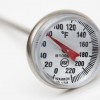 Proper cooking of foods to safe internal temperatures is one of the most effective ways to prevent foodborne illnesses. Several types of food thermometers are available for purchase, and choosing the right one when cooking at home will help to keep food safe for your family. This 3-page fact sheet provides specific information on how to use different thermometers in different foods. Written by Claudia L. Peñuela, Amy Simonne, and Isabel Valentin-Oquendo, and published by the UF Department of Family Youth and Community Sciences, March 2012. http://edis.ifas.ufl.edu/he770
Proper cooking of foods to safe internal temperatures is one of the most effective ways to prevent foodborne illnesses. Several types of food thermometers are available for purchase, and choosing the right one when cooking at home will help to keep food safe for your family. This 3-page fact sheet provides specific information on how to use different thermometers in different foods. Written by Claudia L. Peñuela, Amy Simonne, and Isabel Valentin-Oquendo, and published by the UF Department of Family Youth and Community Sciences, March 2012. http://edis.ifas.ufl.edu/he770
Mantener los alimentos seguros: Escoger y usar termometros en casa (FCS1083Span/FY1296)
 “La cocción apropiada de los alimentos a la temperatura interna segura es una de las formas más efectivas de prevenir las enfermedades transmitidas por los alimentos. Existe una gran variedad de termómetros para comprar y seleccionar el correcto para cuando cocine en casa de manera que usted y su familia estén seguros. Esta publicación proveerá información específica de cómo usar los diferentes termómetros en diferentes alimentos.” This 3-page fact sheet was written by Claudia Peñuela, Amarat Simonne e Isabel Valentin-Oquendo, and published by the UF Department of Family Youth and Community Sciences, September 2012.
“La cocción apropiada de los alimentos a la temperatura interna segura es una de las formas más efectivas de prevenir las enfermedades transmitidas por los alimentos. Existe una gran variedad de termómetros para comprar y seleccionar el correcto para cuando cocine en casa de manera que usted y su familia estén seguros. Esta publicación proveerá información específica de cómo usar los diferentes termómetros en diferentes alimentos.” This 3-page fact sheet was written by Claudia Peñuela, Amarat Simonne e Isabel Valentin-Oquendo, and published by the UF Department of Family Youth and Community Sciences, September 2012.
http://edis.ifas.ufl.edu/fy1296
Should We Go Organic? (FAR8048/FM357)
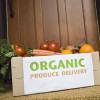 “Choosing what to feed my family is no easy task. In addition to seeking meals that can be ready for our harried schedules and differing tastes, today when I go to the grocery store I also have to make decisions about whether or not to buy organically grown or raised foods. Many consumers worry that pesticides used in conventionally grown produce may increase our risk of cancer. But is this concern based in reality?” This 2-page fact sheet was written by Kate Welch, Linda Bobroff, and Amy Simonne, and published by the UF Department of Family Youth and Community Sciences, August 2012.
“Choosing what to feed my family is no easy task. In addition to seeking meals that can be ready for our harried schedules and differing tastes, today when I go to the grocery store I also have to make decisions about whether or not to buy organically grown or raised foods. Many consumers worry that pesticides used in conventionally grown produce may increase our risk of cancer. But is this concern based in reality?” This 2-page fact sheet was written by Kate Welch, Linda Bobroff, and Amy Simonne, and published by the UF Department of Family Youth and Community Sciences, August 2012.
http://edis.ifas.ufl.edu/fm357
Keeping Food Safe: Special Tips for Potluck Parties (FCS8999/FY1287)
 Potluck parties are very popular in the United States because they allow people to share responsibility of cooking and food preparation. While it’s wonderful to be able to share favorite recipes with friends and to have the opportunity to eat a variety of foods without much cost, potluck meals are also associated with an increased risk of foodborne illness. To decrease your risk of foodborne illness, itis very important to follow the “two-hour rule” and refrigerate all prepared foods within two hours of purchasing or cooking. Read this 2-page fact sheet for more potluck food safety tips. Written by Claudia Peñuela and Amarat Simonne and published by the UF Department of Family Youth and Community Sciences, March 2012.
Potluck parties are very popular in the United States because they allow people to share responsibility of cooking and food preparation. While it’s wonderful to be able to share favorite recipes with friends and to have the opportunity to eat a variety of foods without much cost, potluck meals are also associated with an increased risk of foodborne illness. To decrease your risk of foodborne illness, itis very important to follow the “two-hour rule” and refrigerate all prepared foods within two hours of purchasing or cooking. Read this 2-page fact sheet for more potluck food safety tips. Written by Claudia Peñuela and Amarat Simonne and published by the UF Department of Family Youth and Community Sciences, March 2012.
http://edis.ifas.ufl.edu/fy1287
Keeping Food Safe: Shopping and Transporting Foods (FCS80003/FY1290)
 Grocery shopping can be an entertaining activity, but effective shopping involves lots of planning and organization, depending on individual needs and choices in different grocery stores. Good planning and organization can save money and time. Have you ever wondered if you follow safe food handling practices when you buy and transport food? Follow the key guidelines in this 2-page fact sheet to protect yourself and your family! Written by Claudia Peñuela and Amarat Simonne, and published by the UF Department of Family Youth and Community Sciences, March 2012.
Grocery shopping can be an entertaining activity, but effective shopping involves lots of planning and organization, depending on individual needs and choices in different grocery stores. Good planning and organization can save money and time. Have you ever wondered if you follow safe food handling practices when you buy and transport food? Follow the key guidelines in this 2-page fact sheet to protect yourself and your family! Written by Claudia Peñuela and Amarat Simonne, and published by the UF Department of Family Youth and Community Sciences, March 2012.
http://edis.ifas.ufl.edu/fy1290
